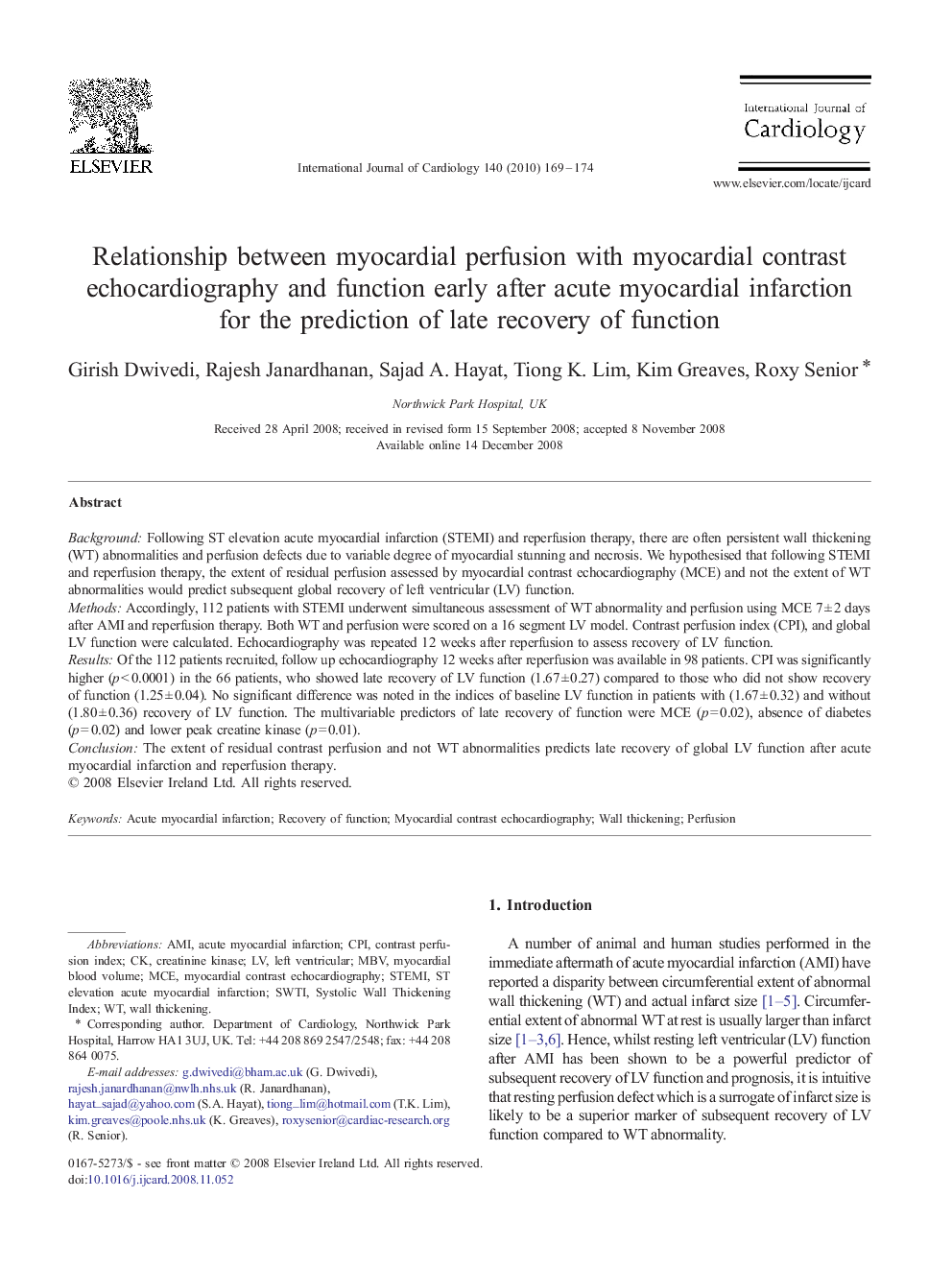| Article ID | Journal | Published Year | Pages | File Type |
|---|---|---|---|---|
| 2932287 | International Journal of Cardiology | 2010 | 6 Pages |
BackgroundFollowing ST elevation acute myocardial infarction (STEMI) and reperfusion therapy, there are often persistent wall thickening (WT) abnormalities and perfusion defects due to variable degree of myocardial stunning and necrosis. We hypothesised that following STEMI and reperfusion therapy, the extent of residual perfusion assessed by myocardial contrast echocardiography (MCE) and not the extent of WT abnormalities would predict subsequent global recovery of left ventricular (LV) function.MethodsAccordingly, 112 patients with STEMI underwent simultaneous assessment of WT abnormality and perfusion using MCE 7 ± 2 days after AMI and reperfusion therapy. Both WT and perfusion were scored on a 16 segment LV model. Contrast perfusion index (CPI), and global LV function were calculated. Echocardiography was repeated 12 weeks after reperfusion to assess recovery of LV function.ResultsOf the 112 patients recruited, follow up echocardiography 12 weeks after reperfusion was available in 98 patients. CPI was significantly higher (p < 0.0001) in the 66 patients, who showed late recovery of LV function (1.67 ± 0.27) compared to those who did not show recovery of function (1.25 ± 0.04). No significant difference was noted in the indices of baseline LV function in patients with (1.67 ± 0.32) and without (1.80 ± 0.36) recovery of LV function. The multivariable predictors of late recovery of function were MCE (p = 0.02), absence of diabetes (p = 0.02) and lower peak creatine kinase (p = 0.01).ConclusionThe extent of residual contrast perfusion and not WT abnormalities predicts late recovery of global LV function after acute myocardial infarction and reperfusion therapy.
